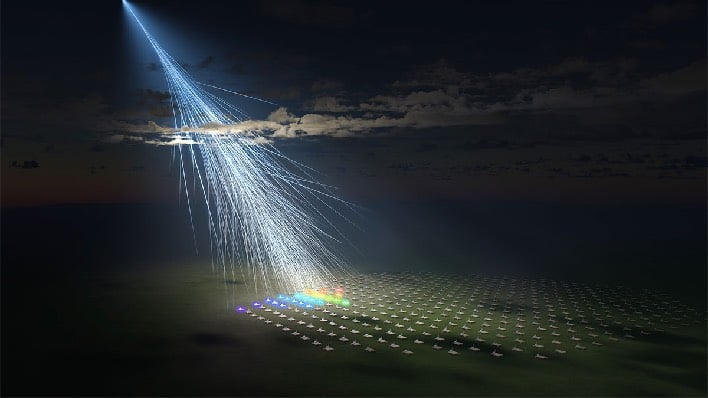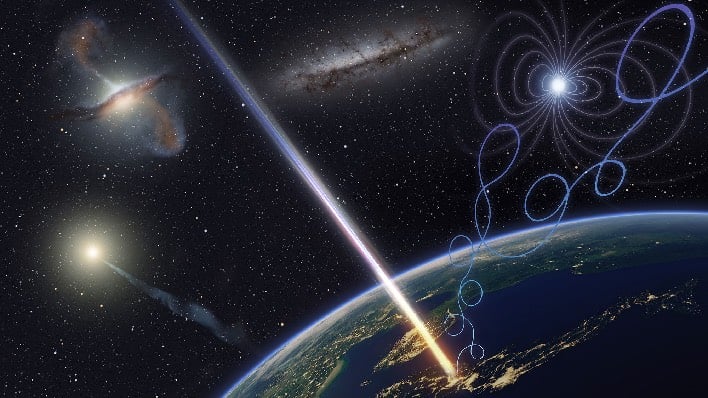A Mysterious Cosmic Ray From Beyond The Galaxy Hit Earth And Scientists Are Stunned

The Telescope Array comprises 507 surface detector stations arranged in a square grid located outside of Delta, Utah. It has been utilized to observe over 30 ultra-high-energy cosmic rays. These extreme cosmic rays have left scientists baffled about what produces them. The latest observation, as well as the highest-ever recorded event known as the Oh-My-God particle, appears to have originated from the Local Void, an empty area of space bordering the Milky Way galaxy.
“The particles are so high energy, they shouldn’t be affected by galactic and extra-galactic magnetic fields,” remarked John Matthews, Telescope Array co-spokesperson and co-author of the study. “You should be able to point to where they come from in the sky. But in the case of the Oh-My-God particle and this new particle, you trace its trajectory and there’s nothing high energy enough to have produced it. That’s the mystery - what the heck is going on?”

“These events seem like they’re coming from completely different places in the sky. It’s not like there’s one mysterious source,” explained John Belz, professor at the University of Utah and co-author of the study. “It could be defects in the structure of spacetime, colliding cosmic strings. I mean, I’m just spit-balling crazy ideas that people are coming up with because there’s not a conventional explanation.”
Part of investigating these high-energy cosmic rays includes analyzing their composition for clues to their origin. Heavier particles, like iron, have more charge and are more susceptible to bending in a magnetic field than lighter particles. The Amaterasu particle is believed to be most likely a proton.
Astrophysicists still do not know what is producing these high-energy cosmic ray events. However, the Telescope Array is currently undergoing an expansion that will hopefully provide greater insight. Upon completion, the array will cover an area nearly the size of Rhode Island, and will hopefully provide answers to what exactly is happening.

